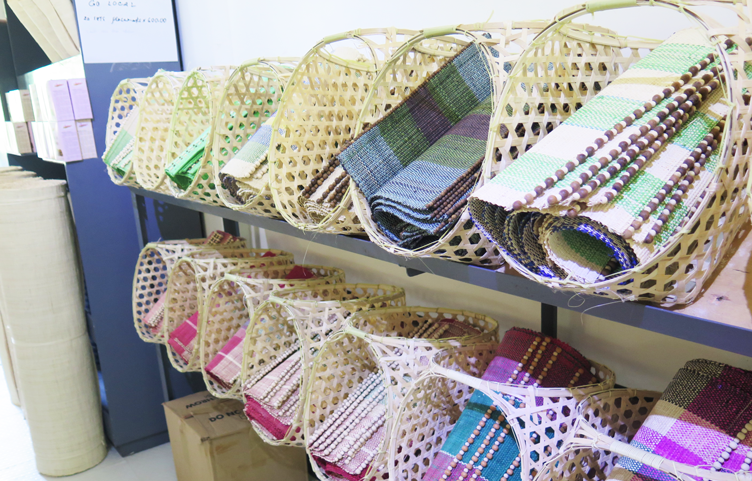LOOMING STRANDS OF SUCCESS
Aside from sweet dips and swells of the postcard-perfect Chocolate Hills, the irresistible charm of pocket-sized tarsiers, and white sand beaches, the island province of Bohol carries something else that Filipinos can undoubtedly be proud of—raffia, a natural fiber from the buri palms, and how the steadfast hands of Tubigon womenfolk crafted them from buds into a globally important fabric.
Learning yarn by yarn
The story of Tubigon Loomweavers Multi-Purpose Cooperative (TLMPC) started with meager numbers: 15 women and an initial capital of Php 5,000. Consisting mostly of housewives of farmers and fishermen, the group was organized by the Department of Trade and Industry (DTI) as one of its Agrarian Reform Beneficiaries (ARBs) under the Comprehensive Agrarian Reform Program (CARP).
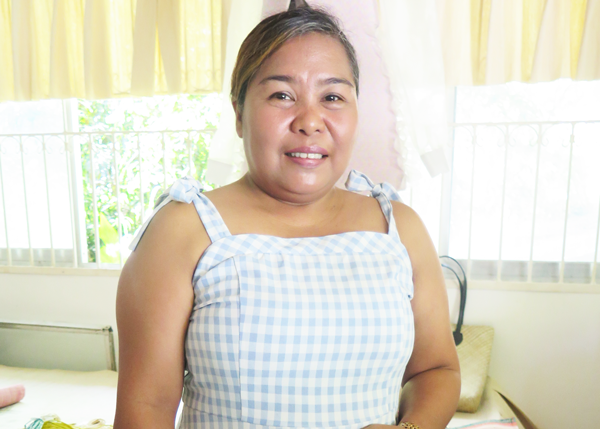
No new beginning was ever easy. Having lived most of their lives at home waiting for the return of their husbands, the members had no inkling how to operate a loom, even if the practice of producing fabrics with one has been present in the province for over a century already. All these years, their hands are familiar only with stacking lambay crabs on their containers for selling and picking husks off a tray of rice grains. They did not know yet the touch of a raffia fabric, nor were they aware that they can spin them out into articles that would be a hit to buyers overseas.
While the women weavers lacked the necessary knowledge and skills at the start of the business, their determination and perseverance kept them afloat.
DTI introduced them to the art of loom weaving through various seminars and trainings, beginning with basic skills up to product development and enterprise management. Their commitment to make the enterprise a successful endeavor coupled with DTI’s unwavering support, TLMPC thrived. In no time, the cooperative was churning out sheets after sheets of loom-woven textiles.
In 2014, the Department also turned over to the cooperative a Php 1.26-M handloom equipment through the Shared Service Facilities (SSF) program. This helped the group produce wider sheets of fabric—from 24-inch to 72-inch wide rolls—with much better quality. With this facility, they can now spin rolls of raffia for furniture as well as finer fabrics for trench coats, gown, and curtains. Eager as ever, the weavers were more than willing to master handling the machines.
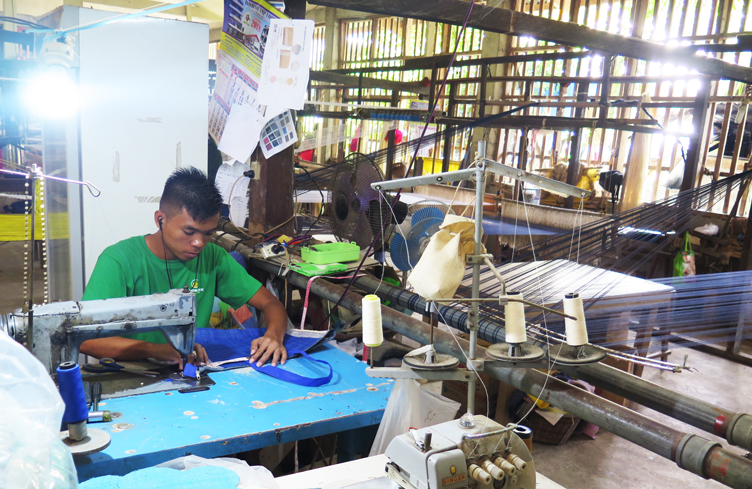
Labor of Love
It was in 2006 when TLMPC faced a major challenge on its cash flow since no one was an expert in managing finances. Maria Trina V. Sumayang, General Manager of TLMPC, joined the cooperative then as a Marketing Consultant and helped the group in solving the major setback.
“When I first came in, the biggest problem was about the working capital,” Trina shared, who was referred to the group by the Ayala Foundation and the Philippine-Australian Community Assistance Program (PACAP) that also offer assistance to TLMPC. “When that was sorted out and I became a project coordinator, I realized that we have a bigger problem at hand: our weavers are sometimes resistant to change.”
Trina, who was armed with years of experience in managing the businesses of her family, knew she had to help the weavers understand the importance of keeping up with the times.
“I have to let them understand that, and at the same time instill in their minds that they must never forget what they learned in traditional weaving,” she added. Every new idea, she says, is a prospect for progress.
Trina stayed with the group as its General Manager. After a series of workshops and trainings from DTI, the weavers were able to imbibe the importance of embracing change, making the enterprise flourish.
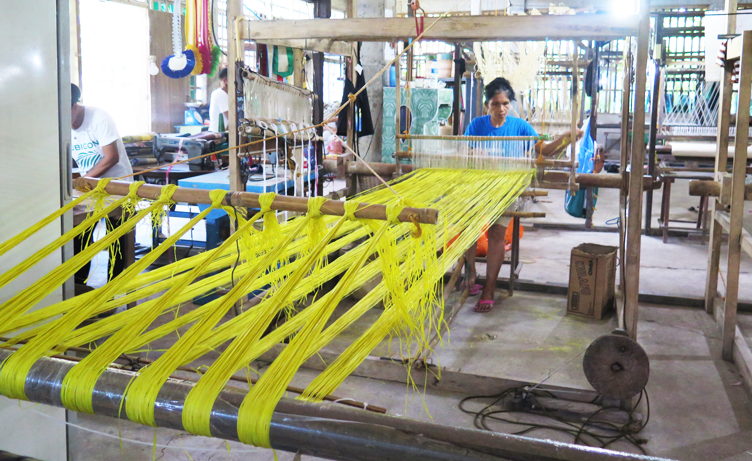
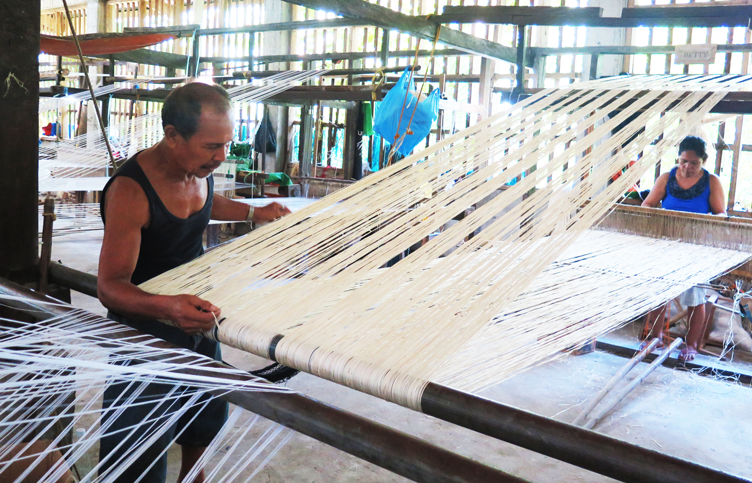
At present, the TLMPC family has grown from having a little more than a dozen to 170 employees—of these, 70 are fulltime, while the others are sub-contracted, home-based workers. Today, husbands and sons have also joined the women weavers of TLMPC to help earn income for their respective households.
This workforce complement, along with the aid that poured in incessantly from the government, non-government organizations (NGOs), and the private sector, boosted up their link to the value chain. TLMPC members were already glad seeing their raffia yarns and sheets being converted into various merchandise and sold in various cities and countries.
Today, Trina’s vision was realized: they continue to supply raffia fabrics, but they are capable enough to venture into creating their own finished products. Displayed in their showroom in Barangay Pinayagan Norte (approximately 50 kilometers away from the Tagbilaran provincial capital) are whimsically designed bags, wallets, table runners, placemats, coasters, accessories, home decor, and even apparel. With the intricate design patterns in them and the sturdiness of the woven material, a customer could easily say all these creations were handcrafted with the labor of love.
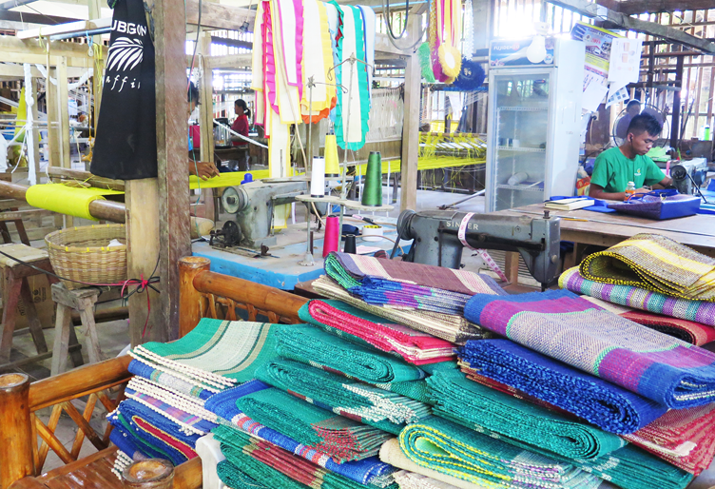
Pedaling it up a notch
Trina considers the new concepts she sees in trade fairs and events as a yardstick for the quality and trendiness of their next lines of products.
“Attending and participating in trade fairs proved to be a big help to us, not only because it guides us in developing products, but because it encourages us to be globally competitive as well,” she said. “When you’re in the industry you will be asked, ‘Trina, what’s new?’ You have to be updated about what’s in and what’s not, what’s hot and what’s not. We have to innovate.”
For TLMPC, product diversification is probably the best step they took. They earned the trust of elite clients; droves of tourists drop by their showroom to purchase souvenirs; their handcrafted fabrics are sourced to be sewn into gowns and to be modeled by beauty queens; and luxury hotels are buying their loom-woven textiles for architectural embellishments. In fact, their goods are a regular to prestigious trade fairs like Manila FAME, Sikat Pinoy National Trade Fair, and Sandugo Trade Fair.
“I am happy to say that we are in a good place right now,” Trina mentioned. “Before, we had to wait for a 30% to 50% down payment from our buyers so we could purchase the necessary materials. Today, we can start working right away, as funding is not that much of an issue anymore.”
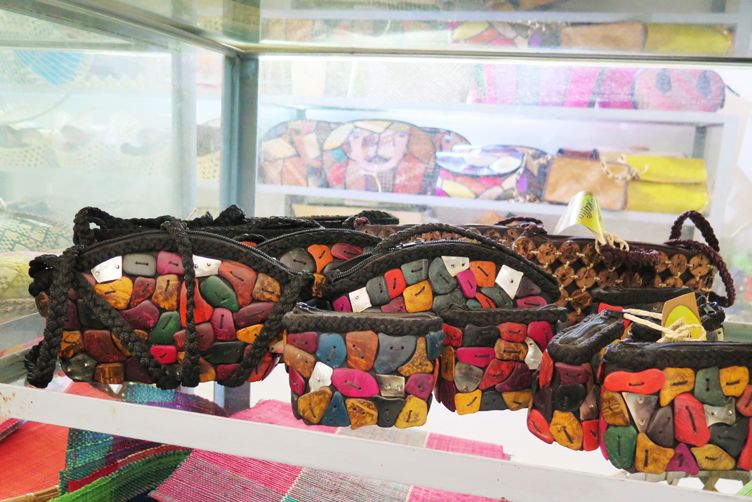
There is an increasing demand for indigenous and eco-friendly materials like raffia in the international market, which spurred TLMPC’s vision to be able to directly export their merchandise. Fueled by this, they are currently moving to develop younger second-line weavers to assist their middle-aged main workers beyond Tubigon, specifically in the municipalities of Inabanga, Buenavista, and Danao.
“We are forever grateful to DTI for what they have done for the family, and I’m certain they will continue to lend their hand to us as we embark on our new journey to our next goal,” Trina said.
Looking over the hardworking craftspeople, it was easy to feel proud about how they managed to pedal, pull, and spin away in their handlooms towards their rightful place in the global value chain. With the same amount of grit and ingenuity, and with agencies and groups on their side who are ready to help them step up a notch in the business ladder, these micro-entrepreneurs’ dream would be within their grasp in no time.
